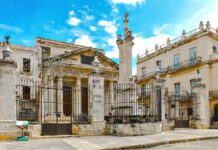
Contents
The Central Highway of Cuba, traveling around Cuba, a company of millions.
The Central Highway of Cuba is another of the island’s Civil Engineering Wonders. It is born in the National Capitol and is divided into two: an artery to the east of the country and another to the western part. Its measurement from Pinar del Río to Santiago de Cuba has a length of 1139 kilometers.
Among the most important data of its execution is having started the work on May 20, 1927 and its completion four years later, on February 24, 1931 and its cost that amounted to 111 million pesos.
Although it no longer has the initial characteristics, the quality of the materials used then can be appreciated. For 89 years it has served a whole world rolling on its concrete coated with an asphalt mix.
Four years was a record time to complete it but it was necessary to complete the road system next to the railway that had already been in operation since the 19th century.
Necessary numbers and curiosities.
During its construction, 1,732 factory works were carried out, including 23 metal bridges, 106 level crossings, and 30,000 trees were planted on both sides of the road.
The factory works were calculated to support 20 tons of weight on its two tracks and the minimum visibility in the curves is 110 meters, with a pavement width of six meters in unpopulated areas and eight in urban areas.
Another legend is the so-called Capitol Diamond, a 24-karat gem that seemed to have evil powers, because one by one, all its owners died or fell from grace.
A real and unique piece, valued at thousands and thousands of dollars and that in the end was bought only for 12 thousand to mark kilometer zero of the Central Highway. It was stolen in 1946 and a year later it mysteriously appeared in President Grau’s office, inside an envelope.
The idea of such a long road.
Since colonial times, the island needed a land communication route that would connect the two most important cities: Havana and Santiago de Cuba. Travelers preferred to surf the entire island than to walk on the sometimes crowded roads.
By 1925, General Gerardo Machado assumed the presidency of the island and took as his campaign slogan: “Water, roads and schools”. Thus, just two months after taking office, the construction of the Central Highway was announced.
And what happened next?.
Building such an important cart caused immediate changes in the life of the entire country. Road transportation costs decreased and at the same time increased trade, activities related to the automotive branch and also the facilities for the exploitation of the natural and agricultural wealth of virgin regions until then.







